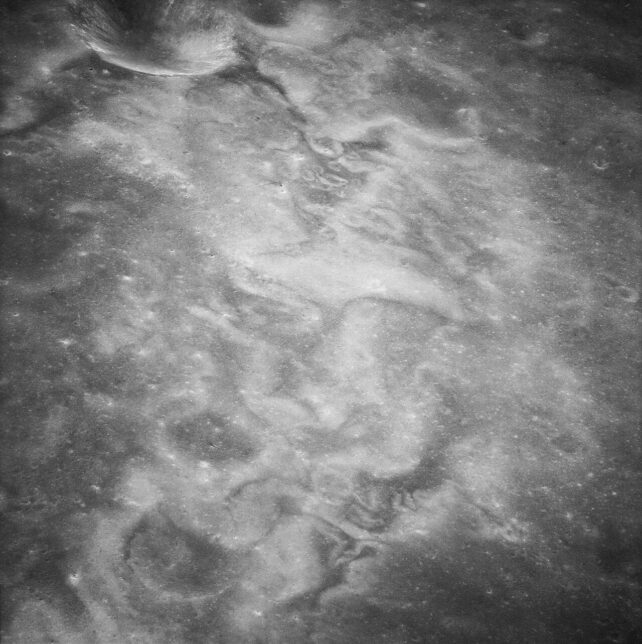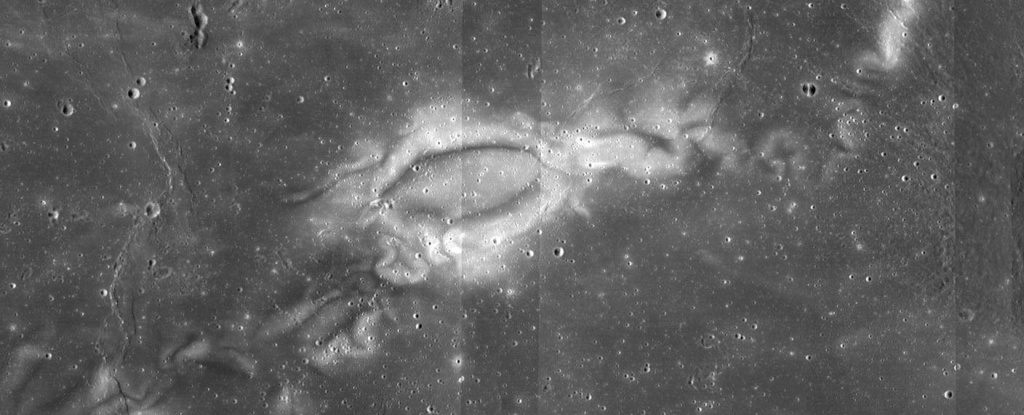The face of the Moon is famous for its grey, pockmarked complexion, but did you know that if you turn a telescope to our planet’s neighboring satellite, you will also see bright patches blemishing the surface?
Ever since these quirky features known as lunar swirls were first spotted way back in the 1600s, scientists have wondered where they came from.
To this day, light-colored regions like that of the well-known Reiner Gamma swirl (pictured below) remain a mystery.
A new study from scientists at Stanford University and Washington University in St. Louis (WUSL) provides evidence of a new explanation.
Unlike planet Earth, the Moon no longer generates a global magnetic field to protect it from the Sun’s charged particles. This means that when solar winds collide with the lunar surface, they turn the rock darker over time due to chemical reactions.
That said, some pockets on the Moon appear to be protected by mini magnetic fields.
So far, every light-shaded lunar swirl scientists have found coincides with one of these local magnetic fields. And yet not all rocks within them are reflective, nor do all magnetic fields on the Moon contain swirls.
So what on Earth (or, rather, on the Moon) is going on?
Some recent studies have explained the confusing results by arguing that micrometeorite impacts on the Moon can kick up charged dust particles, and wherever these particles land, a local magnetic field barrier is created and solar winds are reflected.
But researchers at Stanford and WUSL now dispute that hypothesis. They argue that some other force has ‘magnetized’ the lunar swirls, deflecting the solar wind particles.
“Impacts could cause these types of magnetic anomalies,” admits planetary scientist Michael Krawczynski at WUSL.
“But there are some swirls where we’re just not sure how an impact could create that shape and that size of thing.”
Krawczynski suggests forces from beneath the crust could also be at work. “Another theory is that you have lavas underground, cooling slowly in a magnetic field and creating the magnetic anomaly.”

Just below the surface of the Moon, scientists have found radar evidence of what was once flowing molten rock. These underground rivers of cooled magma indicate a period of volcanic activity billions of years ago.
Using a model of these magma cooling rates, Krawczynski and his colleagues have examined how a titanium-iron oxide mineral called ilmenite – abundant on the Moon and commonly found in volcanic rock – could produce a magnetizing effect.
Their experiments show that under the right conditions, the slow cooling of ilmenite can stimulate grains of metallic iron and iron‐nickel alloys within the Moon’s crust and upper mantle to produce a powerful magnetic field.
This effect, researchers conclude, “could explain the strong magnetic regions associated with lunar swirl.”
“If you’re going to make magnetic anomalies by the methods that we describe, then the underground magma needs to have high titanium,” says Krawczynski.
“We have seen hints of this reaction creating iron metal in lunar meteorites and in lunar samples from Apollo. But all of those samples are surface lava flows, and our study shows cooling underground should significantly enhance these metal-forming reactions.”
Much of what we know so far about the Moon’s localized magnetic fields is derived from orbiting spacecraft, which can measure the effect using radar. But to really understand what is going, we need to directly drill down into the lunar surface.
That’s exactly why NASA is sending a rover to the Reiner Gamma swirl in 2025 as part of their Lunar Vertex mission.
In just a few more years, scientists may have the evidence they need to put this mystery to rest.
The study was published in the Journal of Geophysical Research: Planets.

Dr. Thomas Hughes is a UK-based scientist and science communicator who makes complex topics accessible to readers. His articles explore breakthroughs in various scientific disciplines, from space exploration to cutting-edge research.








